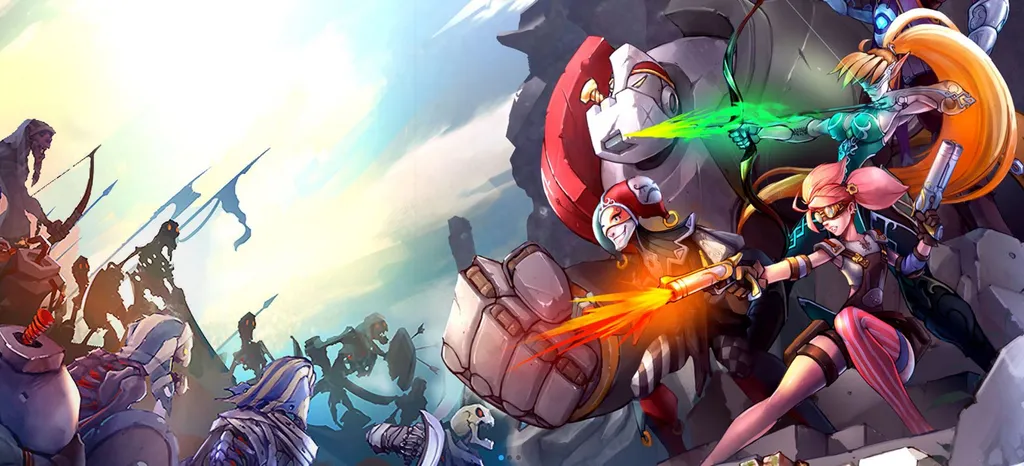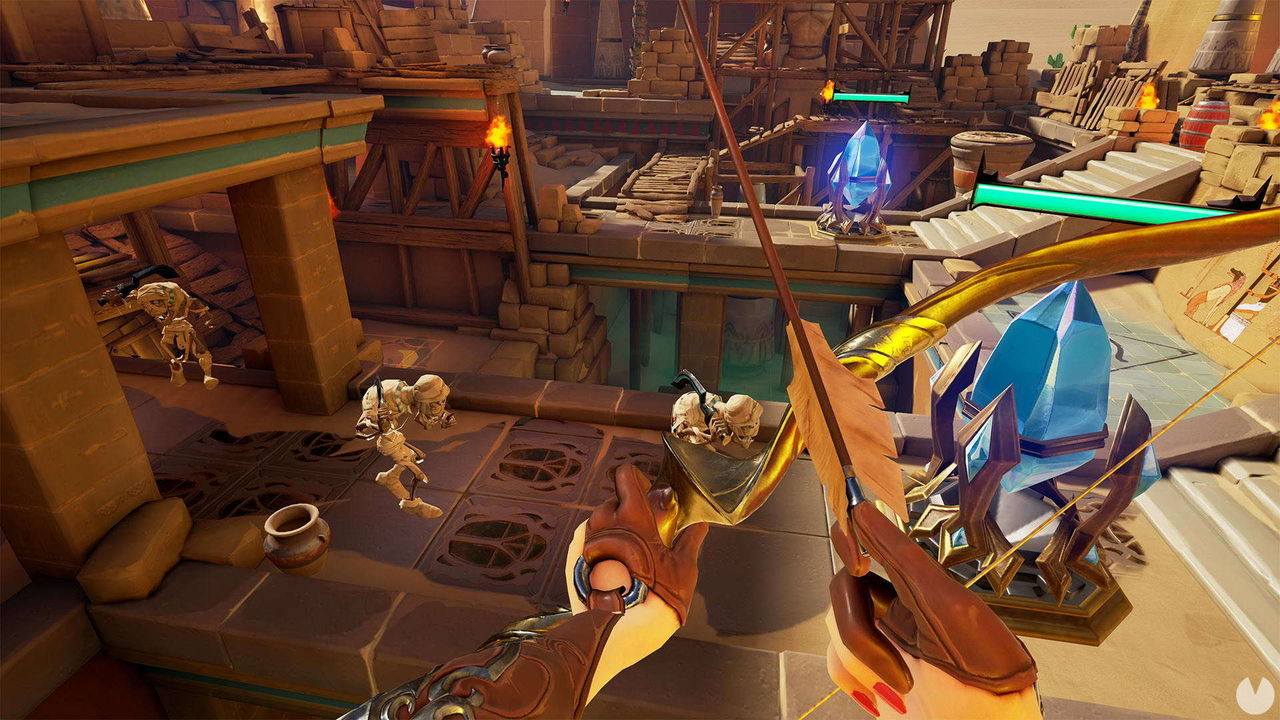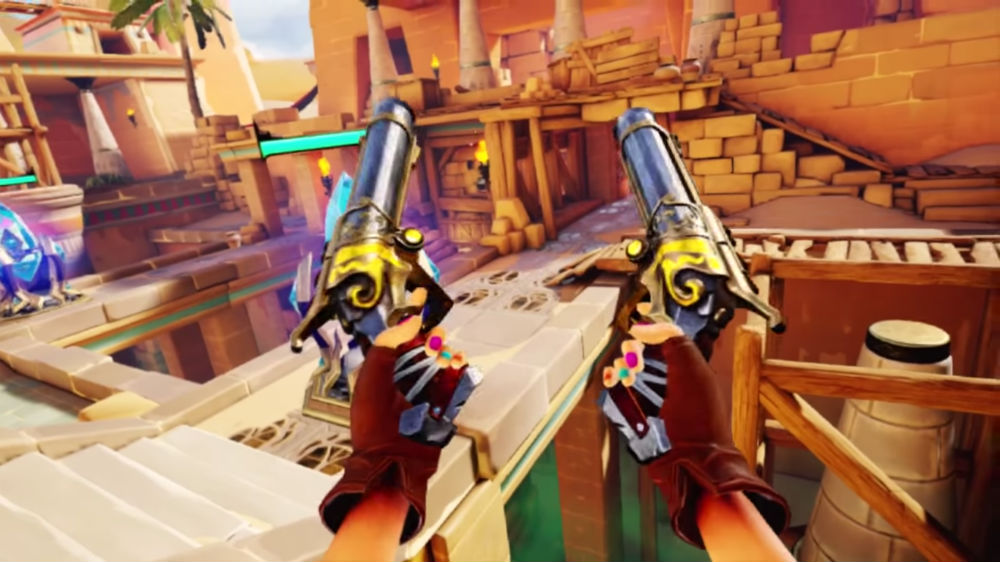Ancient Amuletor is an ambitious upcoming tower-defense shooter that mixes elements of MOBAs and multiple other genres all into one package. It’s coming to PlayStation VR (PSVR) later this year and we had the chance to gain additional insight into the game’s development and inspiration from the game’s Lead Producer and TiGames CEO Zhang Tao.
Ever since the game was first announced we’ve been eager to dive into it and our hands-on preview from PAX East left us hungry for more.
UploadVR: There aren’t many games like this on PSVR, but I’m curious to know why you chose that platform over the Gear VR, or even Rift and Vive?
Zhang Tao: PSVR is one of the largest VR platforms, and its library of content only continues to grow stronger. While still in its first year, we think the quality of games on PSVR such as Resident Evil 7 and Farpoint are great, and they are really showing the potential for the VR experience on the system. Although we are a new game studio, we hope to bring players complete and mature VR games, so we chose to start our games on the PSVR. We plan to also bring our game to Steam VR and the Oculus Store but we wanted to reveal Ancient Amuletor on PSVR first.
UploadVR: Where did the idea for the game come from? It seems to be combining a lot of genres and styles into one game.
Zhang Tao: When we made our first prototype, our intention was to make a more traditional shooting game. We didn’t want to limit our players with only one projectile so we tried to implement archery into its gameplay and found it opened up so many more possibilities. Then we simply discarded the original design, and created a mage, puppeteer, ninja, and other different characters with different gameplay mechanics. Initially, we were surprised to find just how many different & interesting gameplay mechanics a VR headset and motion controller can bring compared to traditional console titles. In doing so, we sought to make a game that included small elements of our favorite hero-based games such as Team Fortress, Overwatch, and League of Legends, so we can give players a vast variety of play styles to choose from. After that we had to determine the rules of the game; we all know VR has no good solution to movement problems, so we chose the tower defense idea, because the “tower” is not mobile and the enemy will be the only moving element inside the game.
Now, we are constantly expanding our hero selections, so in the next few months we will introduce more heroes through DLC. We are also playing around with map designs and new game modes in later updates, which are not limited to just tower defense.
UploadVR: How did past game development projects influence work on Ancient Amuletor?
Zhang Tao: Before Ancient Amuletor, I made an action game for Xbox One Kinect. This experience allowed me to figure out how to adequately use physical movements in a fluid manner. Knowing which movements players will be most comfortable with is one of the trickiest parts of game development, especially with an action-based game where so much is happening at once. As a team, we have more than 10 years of experience with Unreal Engine, which allowed us to finish the game in a short amount time with the highest quality.
UploadVR: What were the most difficult parts of balancing a game like this for PSVR?
Zhang Tao: In the past multi-heroes games, the balance is mostly numerical, attack power, hit points, and resistance. But in VR, especially with the use of motion controller, there is a very interesting thing to balance: “stamina”. By this we mean the real physical strength of the players, not the character on the screen. We have done several physical tests for our players and it’s yielded some interesting results. For example, with the gunner players can play for more than one hour, but only 40 minutes for the archer, and for the puppeteer players have difficulty playing for 30 minutes. It’s all about finding a happy medium that works for everyone. So we will use player’s physical exertion to balance the game, playing more exhausting heroes will do more damage. This alone makes it much different than a normal tower defense game.
UploadVR: What did you find most challenging about making a game specifically for a VR headset?
Zhang Tao: We found the biggest challenge is combating the player’s past gaming experiences. Most players, after wearing the VR headset are placed in a new type of experience, but for the game controls, players still follow their previous intuitions. For example, players are still very dependent on interface design, such as HUD and UI, and these are not realistic looking things and do not translate well for VR. Another example is the story; traditional games usually use cinematic or various cut scenes to describe the game’s plot, which is no different from how viewers understand plot in movies. But in VR, narrative is very difficult and we lack the mediums to allow players to follow a world view to observe. All of these are obstacles for players experiencing VR, especially those that are new to the medium. We’ve gained a ton of experience in making Ancient Amuletor and now have the confidence to face these challenges and continue to find new ways to promote VR and continue to improve in the future.
Ancient Amuletor is slated to release for PSVR this summer with Rift and Vive likely to follow at a later date. Hopefully we find out more about the game at E3 2017 next month.




























